Inverness sits at the head of the Moray Firth and is often called the “capital of the Highlands”. With excellent rail, bus and road links, this small city is an ideal base for exploring one of Europe’s last great wildernesses. Using Inverness as a hub means you can reach sea‑lochs, centuries‑old castles, whisky distilleries, dramatic glens and even the Isle of Skye without changing accommodation. This guide pulls together the most rewarding day trips from inverness to scotland highlands, essential transport tips and answers to common questions so you can make the most of a short visit. Distances and travel times refer to journeys from central Inverness.
Jump to Section
Why Choose Inverness for Day Trips?
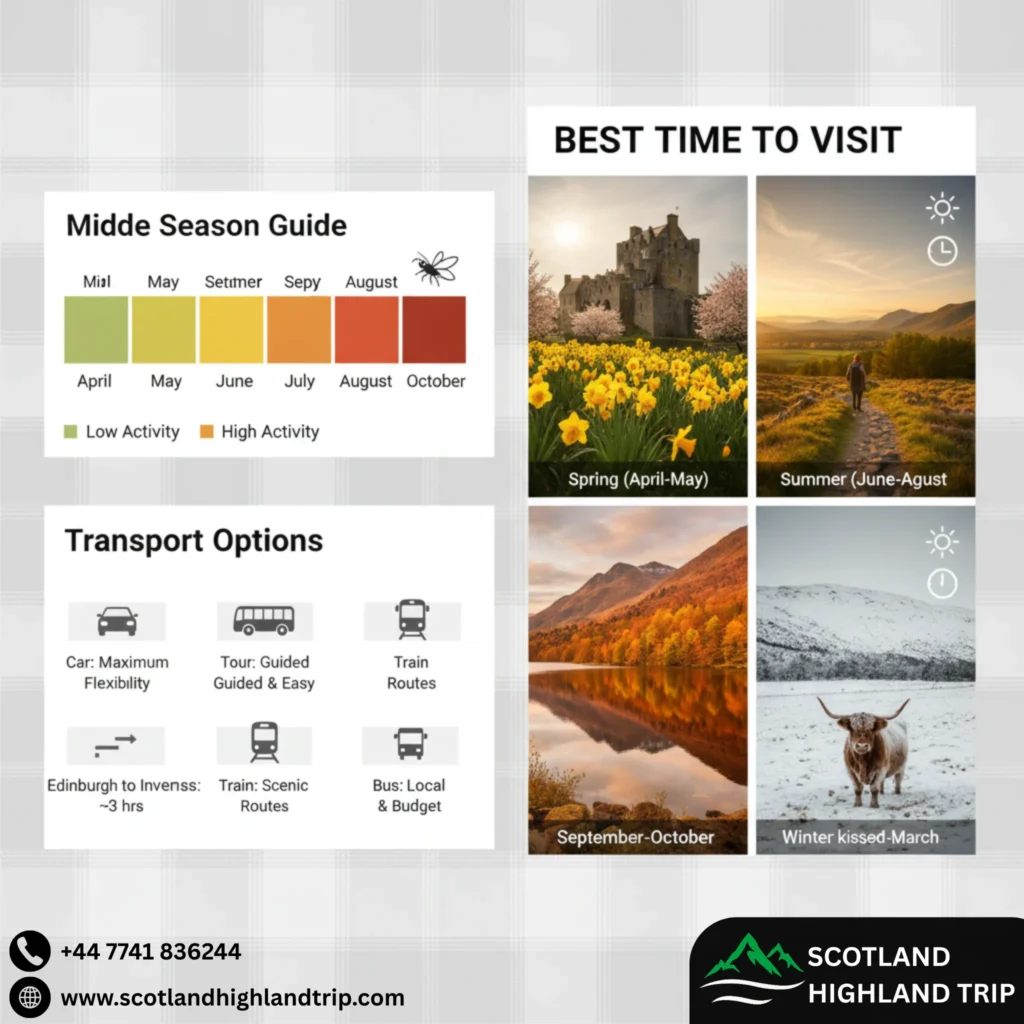
Inverness isn’t just the capital of the Highlands in name, it’s the natural starting point for exploring Scotland’s most dramatic landscapes. Sitting at the meeting point of the River Ness and the Moray Firth, the city combines charm with convenience. With an airport, train station, bus hub and easy road access via the A9 and A82, Inverness connects directly to lochs, glens, castles, and whisky country.
Unlike staying on remote islands or in rural villages, basing yourself in Inverness means you can return each evening to a wide choice of hotels, guesthouses, and restaurants. You won’t need to constantly pack and move accommodation, making it easier to cover more ground in a short trip. The city itself is compact and walkable, offering riverside strolls, a historic castle viewpoint, and cosy pubs where you can end your day with a dram.
Top 10 One-Day Trip Ideas from Inverness
1. Loch Ness & Urquhart Castle
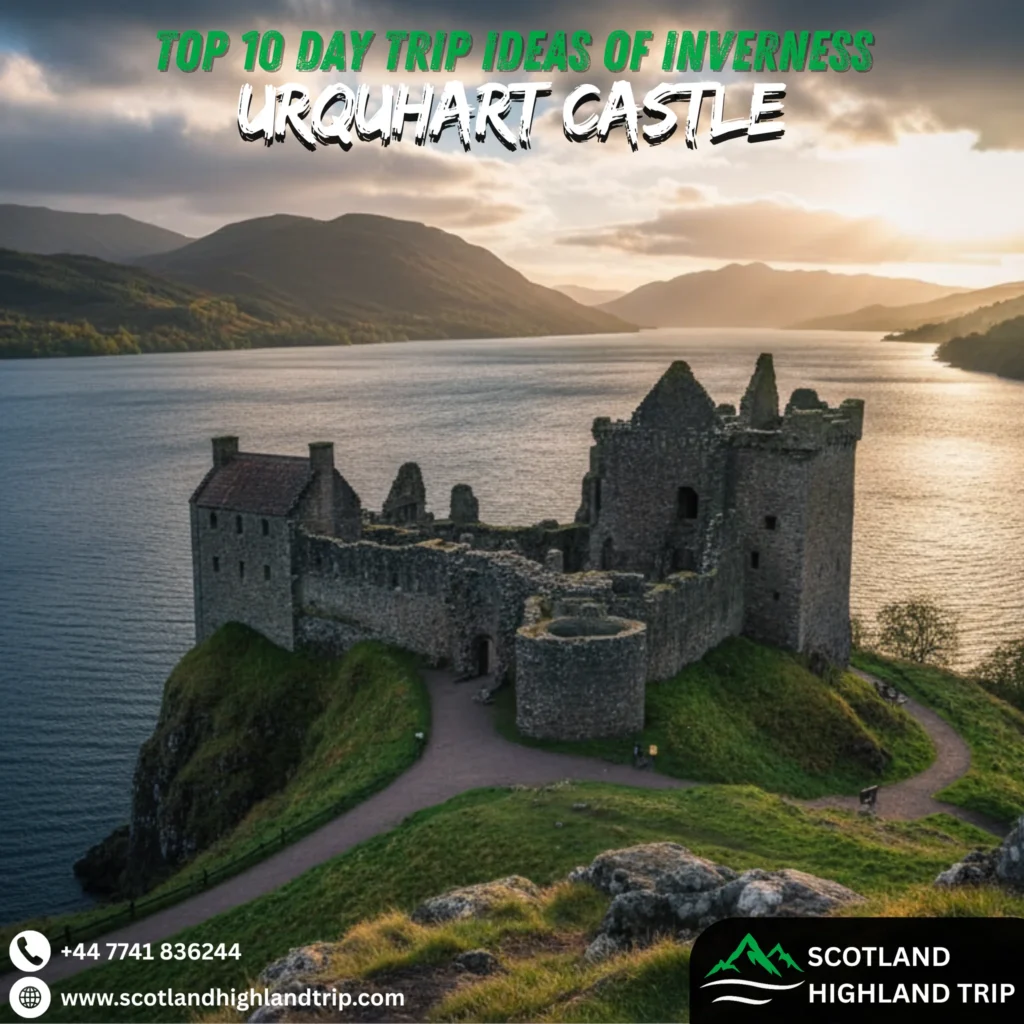
Why go? Loch Ness holds more water than all of England’s lakes combined and stretches 23 miles down the Great Glen. It’s world famous for its monster legend, but the loch is also a prime destination for walking, cycling and boat cruises. The Loch Ness 360 Trail links the Great Glen Way with the South Loch Ness Trail, creating a long‑distance loop for walkers, runners and cyclists. Near the midpoint, Urquhart Castle clings to a rocky promontory; this fortress witnessed over 1,000 years of conflict and was deliberately blown up during the Jacobite risings to prevent its use.
Highlights
- Urquhart Castle: Explore the ruins and climb the Grant Tower for panoramic views, see the Great Hall and a prison cell, and examine medieval weapons such as a trebuchet.
- Boat tours: Several operators depart from Dochgarroch and the Clansman Hotel (Loch Ness by Jacobite), Fort Augustus (Cruise Loch Ness) and Drumnadrochit; cruises range from short 60‑minute trips to half‑day journeys and often include castle entry. A cruise offers the best chance to appreciate the scale of the loch and the possibility of spotting Nessie.
- Falls of Foyers & Dores Inn: On the quieter south‑side road you’ll find the 140 ft Falls of Foyers and the beach at Dores, which is perfect for a picnic.
Getting there: Drumnadrochit, the village by the castle, is 30 minutes by bus or car from Inverness. Many visitors combine a bus journey with a cruise; tours leave from Inverness and return mid‑afternoon. Independent travellers can hire bikes or drive around the loch via the A82 on one side and the B852 on the other.
2. Culloden Battlefield & Clava Cairns
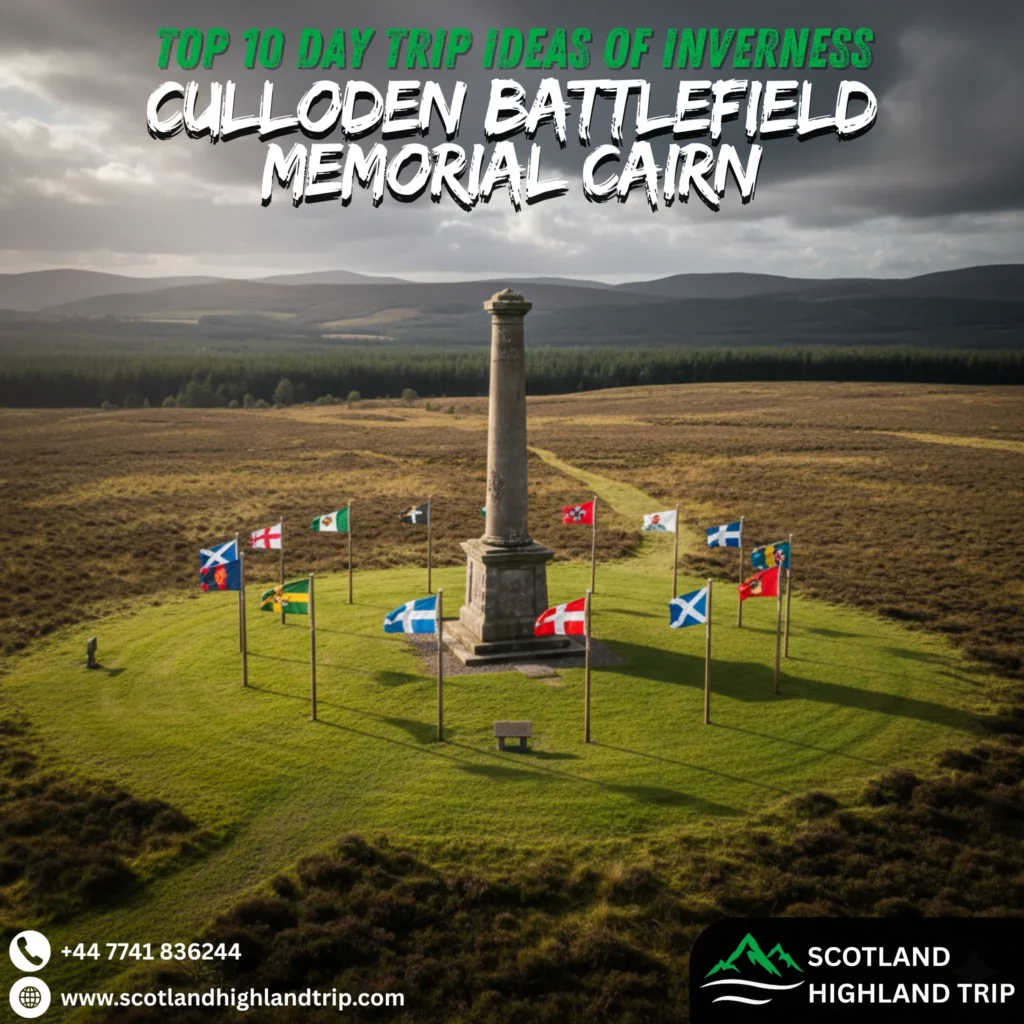
Why go? The windswept moor of Culloden was the site of the last pitched battle fought on British soil. On 16 April 1746 government troops crushed the Jacobite army, ending the attempt to restore the Stuarts to the throne; around 1,600 men were killed, most of them Jacobites. Nearby lies Clava Cairns, a Bronze‑Age cemetery with passage graves and ring cairns dating back almost 4,000 years.
Highlights
- Visitor centre: The National Trust for Scotland’s award‑winning centre features a 360° battle theatre, museum displays and letters written by Charles Edward Stuart. Climb to the roof garden for panoramic views.
- Leanach Cottage: A restored 18th‑century cottage on the battlefield offers a glimpse into rural life of the period.
- Clava Cairns: Wander among passage graves, stone circles and a medieval chapel; the Balnuaran and Milton of Clava sites are free and open year‑round.
Getting there: Culloden lies 15 minutes by car or 25 minutes by bus from Inverness. Continue a further kilometre to reach the cairns. Guided tours run from Inverness and often combine Culloden with Loch Ness or the Outlander film locations.
3. Cairngorms National Park via Aviemore
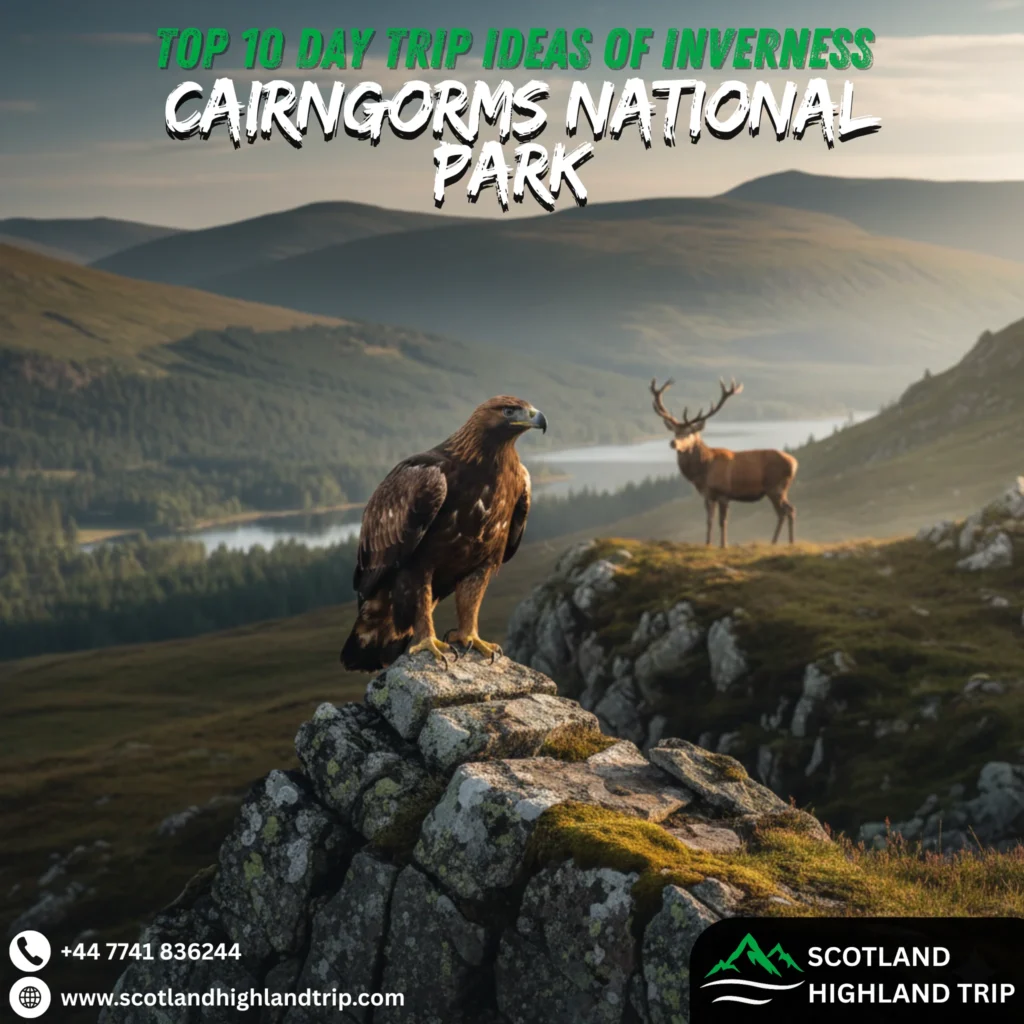
Why go? The Cairngorms National Park covers 4,528 sq km (6 % of Scotland), making it the largest national park in Britain; it contains one quarter of the UK’s rare and endangered species and almost half its area is considered ‘wild land’. Home to 18,000 people, it receives around two million visitors each year. Aviemore is the main gateway with year‑round activities.
Highlights
- Outdoor activities: Hiking, mountain biking, Munro‑bagging, watersports on Loch Morlich and winter skiing attract adventure seekers. Families can head to the Landmark Forest Adventure Park at Carrbridge, which includes treetop trails, water coasters, a Dinosaur Kingdom and the world’s first Bamboozeleum.
- Wildlife: Look out for red deer, ospreys, golden eagles and the native Scottish wildcat. The ancient Caledonian forests harbour rare species such as capercaillie.
- Historic villages: Stop in Aviemore for cafés and gear shops, then explore the heritage centre at Newtonmore or the Highland Folk Museum.
Getting there: Trains and buses reach Aviemore in about 45 minutes and driving takes around 40 minutes. Regular buses connect Aviemore with Cairngorm Mountain, Loch Morlich and surrounding villages. Day tours from Inverness also include stops at Cairngorm Reindeer Centre, the Highland Wildlife Park and scenic viewpoints.
4. Glen Affric & Plodda Falls
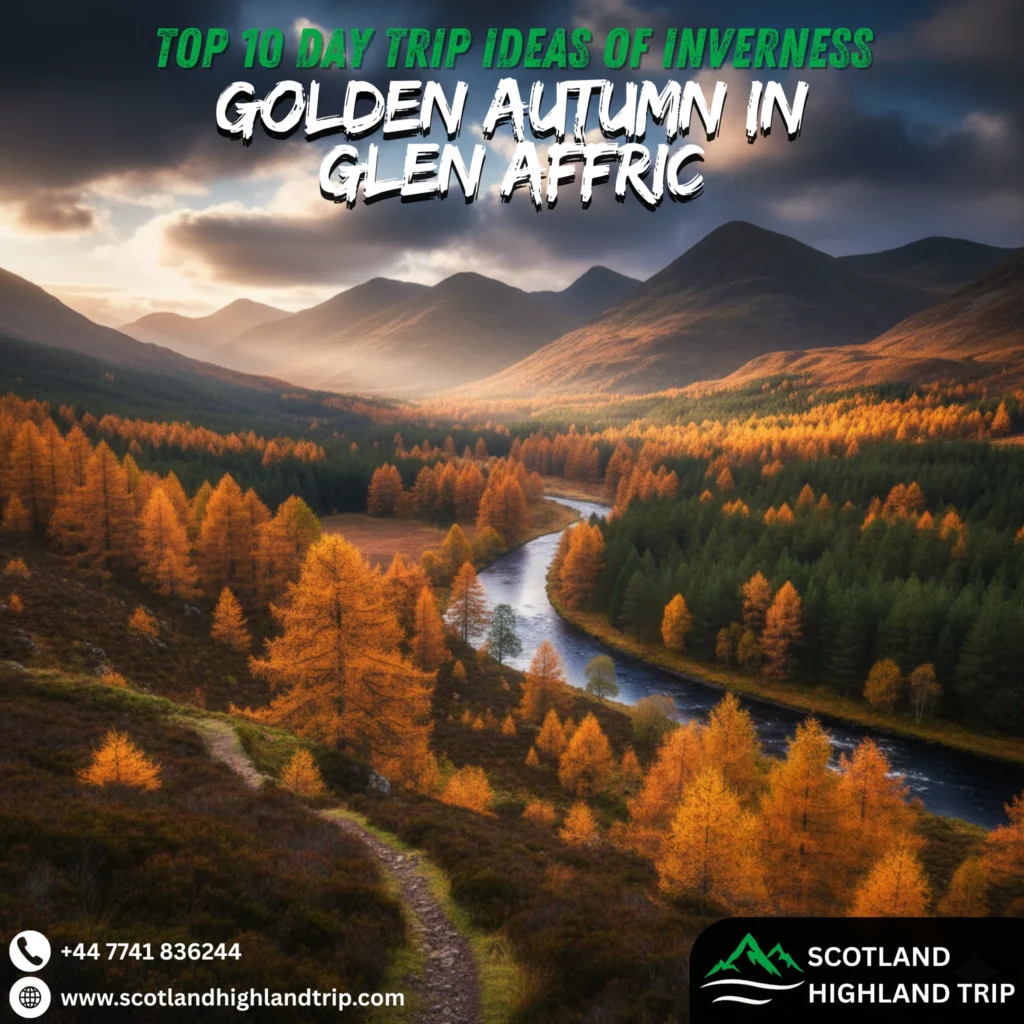
Why go? Many Scots regard Glen Affric as the most beautiful glen in the country. Ancient Caledonian pinewoods cloak the hillsides, lochs mirror rugged mountains and waterfalls plunge through dark ravines. The glen is a National Nature Reserve; narrow single‑track roads restrict coach access and help preserve its wilderness character. Because of its scale, you can easily escape the crowds that flock to Loch Ness.
Highlights
- Dog Falls & River Affric: Wooden walkways and short trails lead to waterfalls and birch woodland; look for crossbills and dragonflies. The Forestry and Land Scotland car park has picnic tables and toilets.
Loch Beinn a’ Mheadhain & Plodda Falls: A short drive from Cannich takes you past this tranquil reservoir to Plodda Falls, where water drops 151 ft from a cliff into a deep gorge. - Loch Affric circuit: A well‑graded 11‑mile trail winds around Loch Affric, offering constant mountain views and remnants of ancient forest. Allow 4‑6 hours. Shorter viewpoints and riverside walks start from the River Affric car park, but note that there are no refreshments in the glen – the nearest cafés are in Cannich or Tomich.
Getting there: From Inverness drive to Cannich (40 minutes) and continue along single‑track roads (allow an extra 30 minutes). There is no public bus into the glen, so the easiest options are self‑drive or a guided tour that combines Glen Affric with Loch Ness or Plodda Falls.
5. Dunrobin Castle & Dornoch

Why go? North of the Cromarty Firth lies a stretch of coast dotted with golf links and grand estates. Dunrobin Castle is the largest great house in the Northern Highlands; with 189 rooms it has been the seat of the Earls and Dukes of Sutherland since the early 14th century. Its French‑style turrets, created by architects Sir Charles Barry and Sir Robert Lorimer, make it look like a Loire château. Nearby Dornoch offers golden sands and a world‑famous golf course.
Highlights
- Dunrobin Castle: Tour the opulent rooms and gardens; the castle served as a naval hospital during World War I and later as a boys’ boarding school. Falconry displays take place in the grounds (April–October). The property is open from 1 April to 31 October.
- Dornoch Beach & Royal Dornoch Golf Club: Dornoch’s quiet beach features wide golden sands and dunes. The Royal Dornoch Golf Club, overlooking the sand, is consistently ranked among the world’s best courses.
- Historic Dornoch: Stroll through the small cathedral town, visit independent shops and stop at the jail museum. Continue along the coast to the 18th‑century hill fort at Meikle Ferry.
Getting there: Travel north via the A9; Dornoch is about an hour by car and 1 hr 45 min by train and bus. From Dornoch drive 10 minutes further to reach Dunrobin Castle at Golspie. Several tour companies offer day trips that include Dunrobin, the Falls of Shin and a whisky distillery.
6. Nairn, Cawdor & Fort George
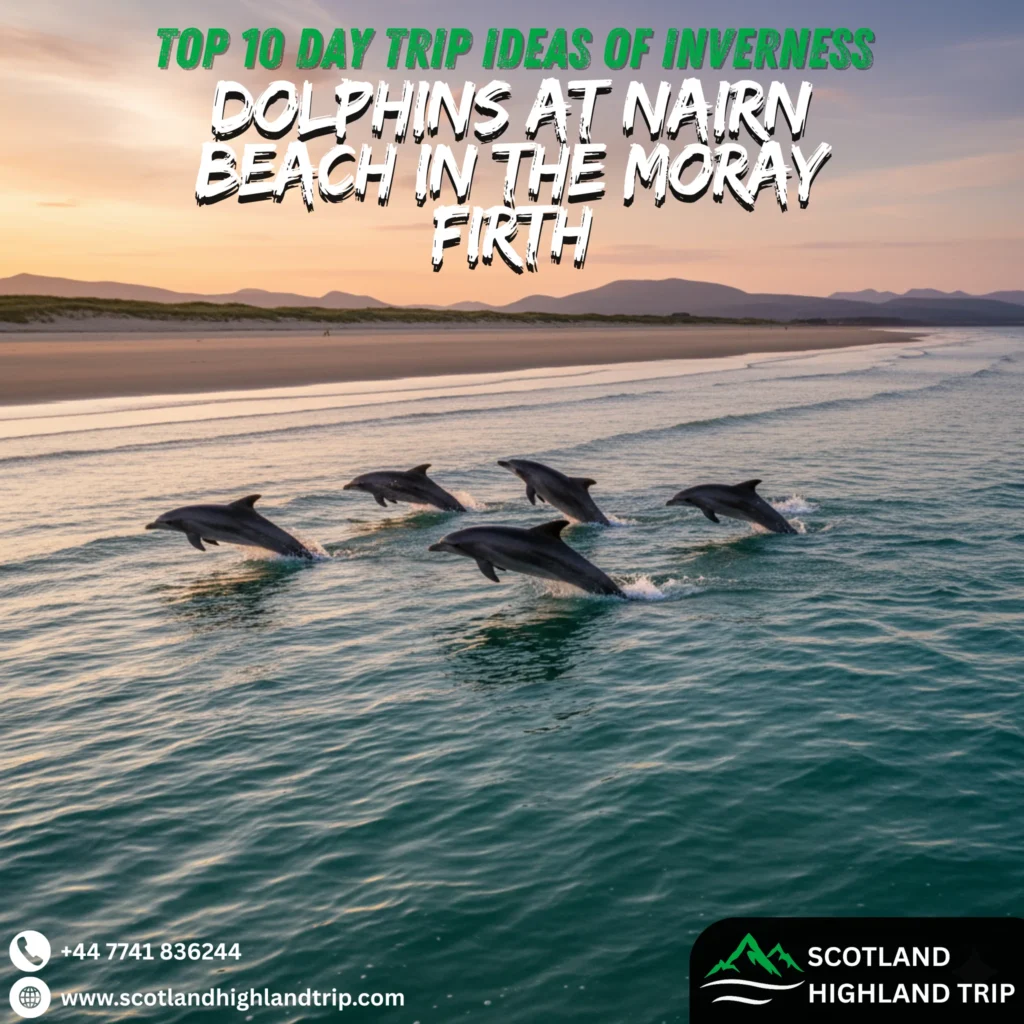
Why go? East of Inverness, the coastline opens into white‑sand beaches and fertile farmland. Nairn enjoys one of the driest, sunniest micro‑climates in Scotland. It attracted holidaymakers like Charlie Chaplin in the 1920s and remains a classic seaside resort with golf courses and playful dolphins offshore. Inland lie Cawdor Castle and Fort George, both steeped in Highland history.
Highlights
- Nairn Beach: Soft white sand backed by dunes and a promenade; paddle in shallow water, build sandcastles and look for bottlenose dolphins in the Moray Firth. The town has cafés, a splash pad and a museum.
- Cawdor Castle: This late 14th‑century castle was built as a private fortress by the Thanes of Cawdor; it retains a drawbridge, moat, turrets and a vaulted 16th‑century kitchen. The interior contains tapestries, fine furniture and artworks collected by the Cawdor family over 23 generations.
- Fort George: Following the failed 1745 Jacobite Rising, the government erected this colossal artillery fortification on a promontory in the Moray Firth. Construction began in 1747, took 22 years and required about 1,000 men; the fort never fired a shot in anger, but it became a recruiting and training base for over 250 years. Its rampart stretches more than 1 km and encloses a complete garrison town.
Getting there: Nairn lies about 16 mi (26 km) east of Inverness; buses and trains run regularly and take around 20 minutes. Fort George is 6 mi south of Nairn (follow signs from Ardersier). Many tours pair Culloden, Cawdor and Fort George.
7. Black Isle: Cromarty & Chanonry Point
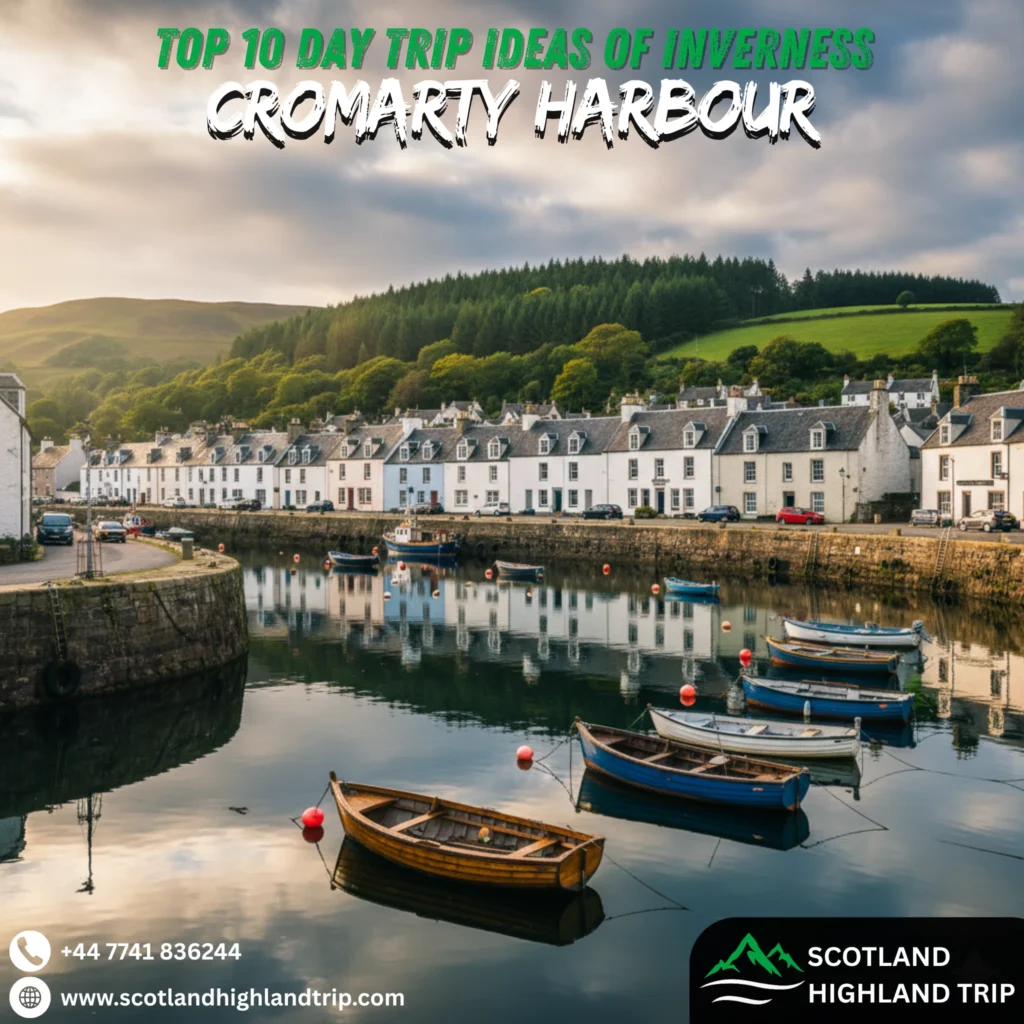
Why go? Despite its name, the Black Isle is a green peninsula famed for its wildlife. Its north‑facing shores offer some of the best dolphin watching in the UK, while pretty villages preserve Georgian and Victorian architecture.
Highlights
- Chanonry Point: This narrow spit near Fortrose is widely regarded as the best place to see bottlenose dolphins in the Moray Firth. The best time to visit is on a rising tide, about one hour after low tide, when dolphins chase fish into the firth. Spectators stand on the stony beach near the lighthouse; dolphins sometimes swim within metres of shore. Stagecoach buses 26A/26C take around 36 minutes from Inverness to Fortrose. The car park is small and there are no toilets, so arrive early or walk from Fortrose harbour.
- Cromarty: At the tip of the peninsula, this historic harbour town has cobbled streets lined with beautifully preserved 18th‑century buildings. Visit the Cromarty Courthouse Museum, Hugh Miller’s Cottage (National Trust for Scotland) and climb the South Sutor for views across the Moray Firth. Dolphins and seals are often spotted from the shore.
- Beer & wildlife: The Black Isle Brewery near Allangrange offers organic ales and farm‑tours, while Udale Bay RSPB reserve attracts migrating waders and geese.
Getting there: Cromarty is about 55–60 minutes by bus or 30 minutes by car. To reach Chanonry Point, take the bus to Fortrose and walk a mile along the shoreline or drive and park near the lighthouse.
8. Speyside Distilleries & Moray towns (Forres & Elgin)
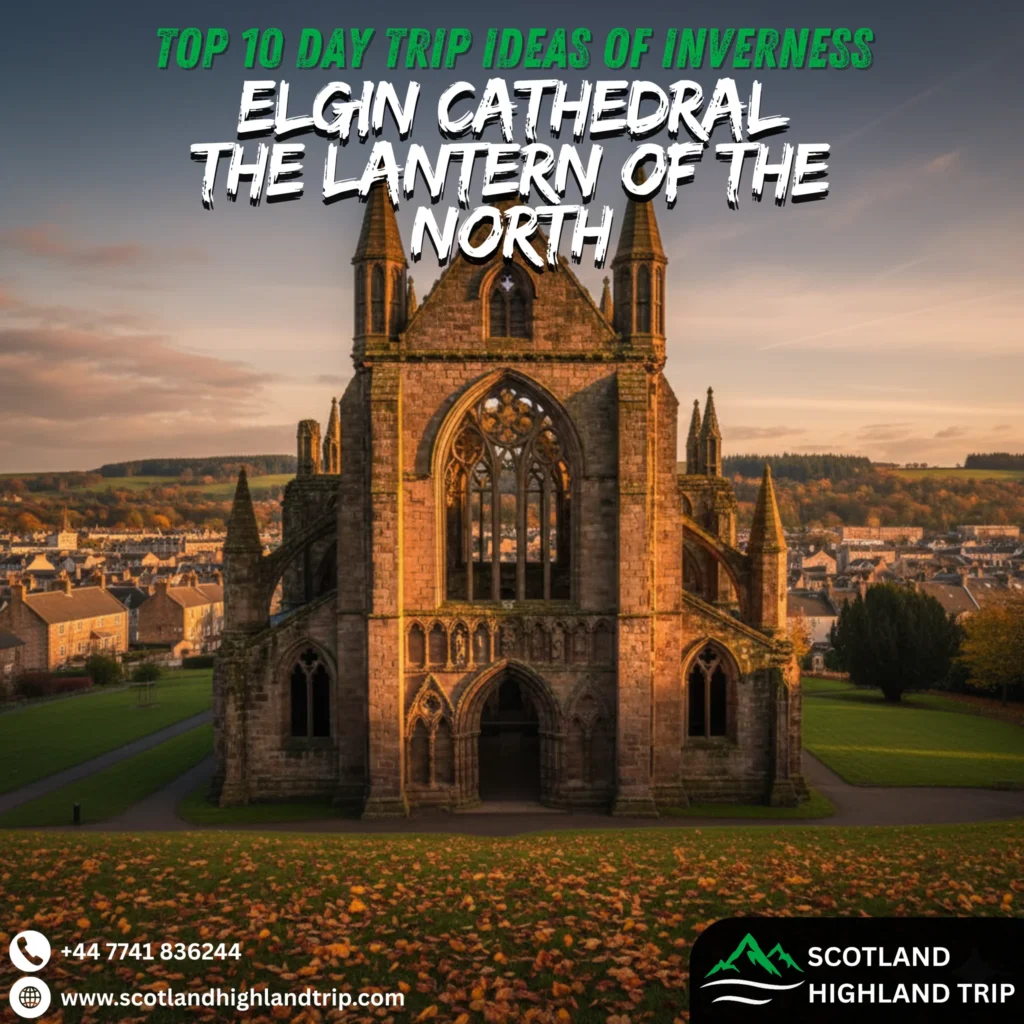
Why go? Speyside produces over half of Scotland’s malt whisky, and a string of distilleries lies within easy reach of Inverness by rail. Pair a tasting with visits to Brodie Castle and Elgin Cathedral, two of Moray’s cultural treasures.
Distilleries accessible by train from Inverness
| Distillery & location | Train time from Inverness | Highlights |
|---|---|---|
| Singleton of Glen Ord (Muir of Ord) | 20 min to Muir of Ord | Uses a slow craft process; classic tour from about £22. |
| Benromach (Forres) | 30 min to Forres | Produces lightly smoky single malts; tours range from £15–£95. |
| Glen Moray (Elgin) | 42 min to Elgin (then 30 min walk) | Offers tours around £16 and tastings from about £52.50. |
| Strathisla (Keith) | 1 h 1 min to Keith | Oldest operating distillery in Speyside and home of Chivas Regal; tours start around £22. |
| Glenmorangie (Tain) | 1 h 7 min to Tain | Known for exceptionally tall stills; classic tour about £25. |
| Clynelish (Brora) | 2 h 15 min to Brora | Coastal distillery with waxy Highland style; tours from £17. |
All of these distilleries have visitor centres and are within walking distance of their railway stations. Always check opening times as some distilleries operate a “silent season” during maintenance.
Other Moray attractions
- Brodie Castle: A grand 16th‑century castle that served as the home of the Brodie clan for over 400 years; it houses a notable art collection and sits among landscaped grounds.
- Findhorn & Moray Coast: Learn about the salmon‑fishing heritage at the Findhorn Heritage Centre and walk along Findhorn Beach’s uninterrupted golden sands.
- Elgin Cathedral: Nicknamed the ‘Lantern of the North’, this 13th‑century cathedral was one of Scotland’s most ambitious medieval buildings. Visitors can see the 13th‑century west front, intricate stone carvings, the octagonal chapter house and Scotland’s tallest gravestone.
Getting there: Trains from Inverness to Forres and Elgin take 30 minutes and 45 minutes respectively. Bus services also operate. You can join an organised “whisky and castles” tour or create your own itinerary using ScotRail services.
9. Glenfinnan Viaduct & the Jacobite Steam Train
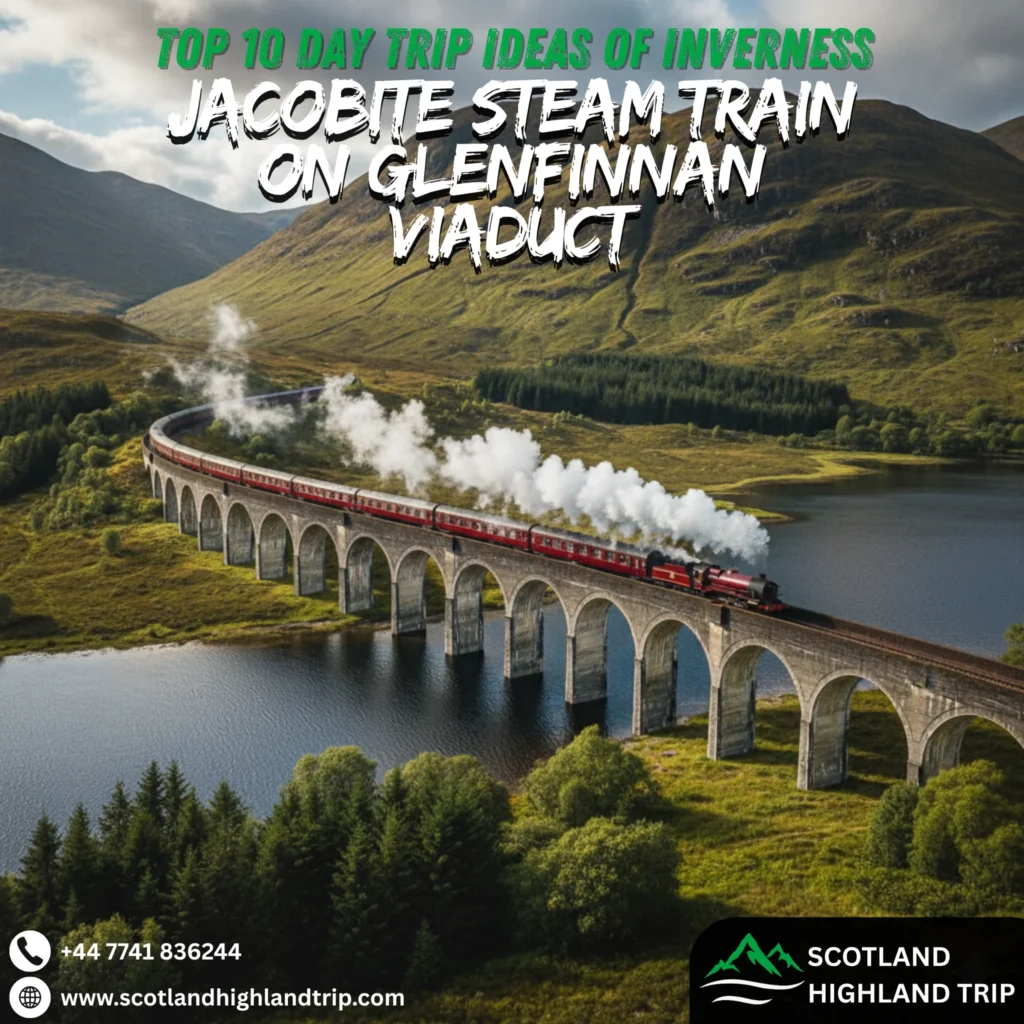
Why go? The curving Glenfinnan Viaduct is both an engineering marvel and a pop‑culture icon. Built by Robert ‘Concrete Bob’ McAlpine in the 1890s, this concrete railway bridge has 21 arches and soars 100 ft above the River Finnan. It carries the West Highland Railway and is best known for appearances in the Harry Potter films. A monument nearby commemorates the Jacobite clansmen who rallied to Prince Charles Edward Stuart in 1745.
Highlights
- Jacobite Steam Train: From mid‑April to October, the heritage Jacobite service runs from Fort William to Mallaig, crossing the viaduct with vintage carriages. The journey is often called the world’s greatest railway trip.
- Viewpoints: Walk 15 minutes from the visitor centre to view the viaduct from below, or climb an extra 10 minutes for a bird’s‑eye view; a 4 km circular walk takes 60–90 minutes.
- Car‑free travel: The National Trust encourages visitors to travel by train from Fort William; those arriving by rail receive 2‑for‑1 entry to climb the Glenfinnan Monument.
Getting there: Glenfinnan lies 17 mi west of Fort William. The fastest way from Inverness is by car along the A82 and the scenic “Road to the Isles” (approx. 2 h 15 min). Alternatively take the train to Fort William (via Glasgow or Perth) and continue on the Jacobite service or a ScotRail train. Day tours from Inverness combine Glenfinnan with Glencoe or Glen Shiel.
10. Isle of Skye & Eilean Donan Castle
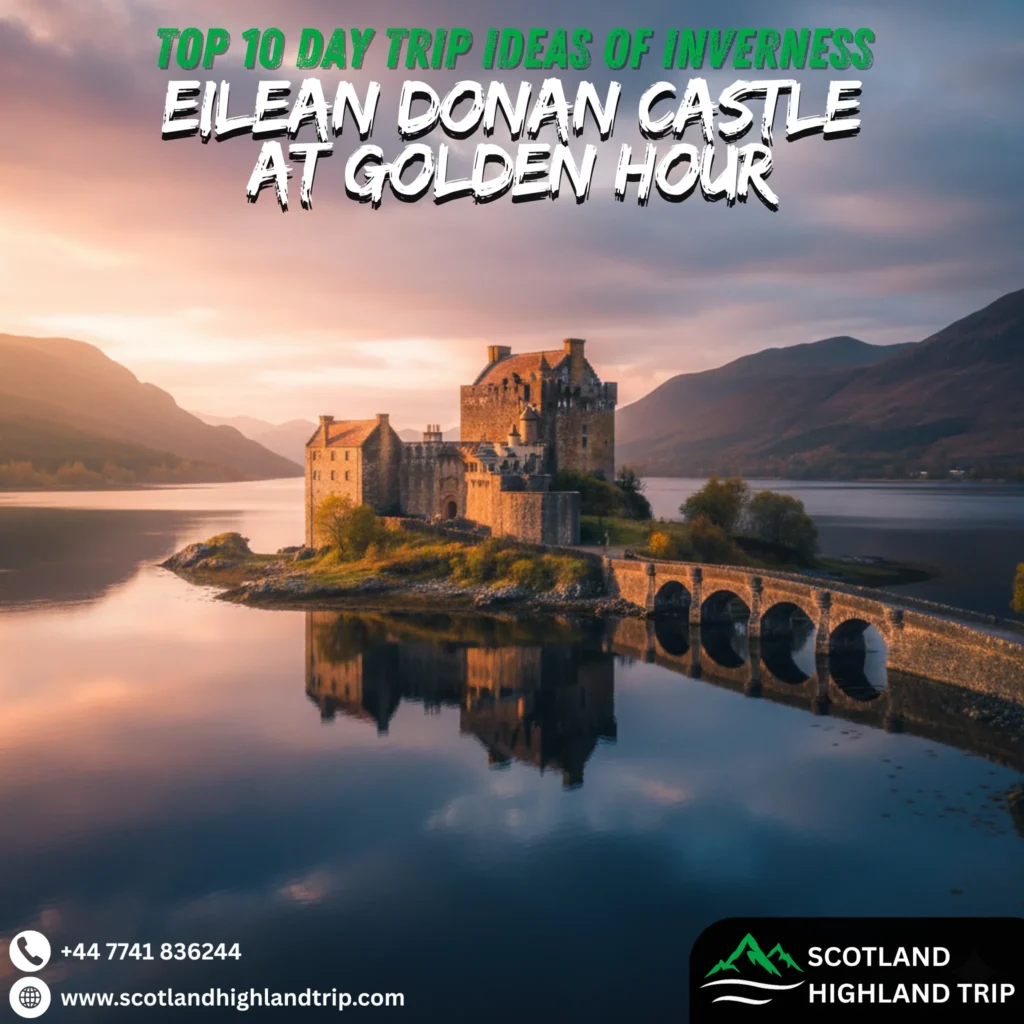
Why go? The Isle of Skye’s jagged Cuillin hills, Fairy Pools and film‑set landscapes make it one of Scotland’s most desirable destinations. Getting there from Inverness is possible on a long day trip when combined with Eilean Donan Castle, often described as the most beautiful castle in Scotland.
Highlights
- Eilean Donan Castle: Perched on an island where three sea lochs converge, Eilean Donan was first inhabited in the 6th century and fortified in the mid‑13th century. It was partially destroyed during the 1719 Jacobite uprising, then meticulously restored by Lieutenant Colonel John MacRae‑Gilstrap between 1911 and 1932. Visitors can explore furnished rooms and battlements while enjoying views of Loch Duich and the Five Sisters of Kintail. Four different versions of the castle have stood here over the centuries.
- Isle of Skye: On Skye, highlights include the colourful harbour town of Portree, the Old Man of Storr, the Quiraing, Fairy Pools and Neist Point lighthouse. The island is also famous for Talisker whisky and fresh seafood.
- Scenic drive: Travel through the Great Glen past Loch Ness, then follow the A87 through Glen Shiel, with its high peaks and lochs. You’ll pass the Five Sisters of Kintail before reaching the Skye Bridge at Kyle of Lochalsh. Tours often stop at Eilean Donan and then explore Skye’s highlights before returning to Inverness.
Getting there: Driving time to Skye via the A82/A87 is around 2½ hours (not including stops). Public transport involves a train or bus to Kyle of Lochalsh followed by a bus to Portree; it’s difficult as a day trip without an organised tour. Small‑group operators such as Rabbie’s run day trips from Inverness to Skye, Eilean Donan and the Fairy Pools.
Planning Tips & FAQ
When is the best time to visit the Scottish Highlands?
Late spring and early autumn offer the most favourable conditions. Our experience and travellers say that the best months for the Highlands are May to July, when days are long and the weather is mild. One of our tour guides highlights May, June, September and October as providing long daylight hours, most tourism businesses open, smaller crowds and fewer midges. Travel + Leisure similarly recommends visiting from May to September for the most sunlight, while cautioning that October can bring unpredictable weather. Winter offers snowy landscapes but short daylight and closed attractions.
What about midges? When should I avoid them?
Biting midges are most common from May to October, particularly on still, damp days at dawn and dusk. They thrive in humid, shady areas near marshes, lochs and forests. To avoid the worst of the midges, aim to travel between late September and early May. If you’re visiting in summer, wear light‑coloured clothing, use insect repellent (DEET‑free products like Smidge or Avon Skin So Soft are popular) and consider a netted hat.
Are midges bad in Inverness?
The city itself suffers less from midges because it is breezier and more urban; however, any nearby woodland, loch or shaded glen will harbour them. They’re most bothersome at dawn and dusk, so plan hikes for midday and bring repellent.
How many days do I need in the Highlands?
A single day from Inverness allows you to see one or two sites such as Loch Ness or Culloden. To enjoy the diversity of the Highlands—mountains, coast, castles and whisky country, plan a three‑to‑five‑day itinerary. This gives you time to venture west to Skye, north to Dunrobin and east to the Cairngorms without feeling rushed. Longer stays reward you with remote glens like Glen Affric and extended hikes.
What is the most scenic route from Inverness to the Isle of Skye?
There are two main options and both are spectacular. The southern route follows the A82 along Loch Ness and the A87 through Glen Shiel, passing Loch Cluanie and the Five Sisters of Kintail before crossing the Skye Bridge; this is the route taken by most tours and includes Eilean Donan. The northern route via the A832 and A890 loops through Wester Ross, taking in the beaches around Gairloch, Corrieshalloch Gorge and expansive views over Loch Maree. Choose the southern road for historic castles and direct access to Skye, or the northern for wilder scenery and fewer crowds.
Can I do day trips from Inverness without a car?
Absolutely. Inverness is a transport hub with frequent buses and trains:
1. Loch Ness & Urquhart Castle: 30 min bus.
2. Culloden Battlefield: 25 min bus.
3. Cairngorms (Aviemore): 45 min train.
4. Forres/Elgin & distilleries: 30–45 min train; walk or taxi to nearby distilleries.
5. Dornoch & Dunrobin: Train and bus via Tain take about 1 hr 45 min.
6. Black Isle (Cromarty & Fortrose): Buses take 36–60 min.
For Skye, Glenfinnan and remote glens, public transport is time‑consuming; joining a small‑group tour or hiring a car maximises your day.
Is Inverness walkable?
Yes. The city centre is compact, with most attractions like Inverness Castle, the Victorian Market, and the River Ness reachable on foot. For day trips, however, you’ll need a car, train, bus, or tour operator.
What’s the cheapest way to do day trips from Inverness?
Public transport is the most affordable option. Buses and trains run to places like Loch Ness, Culloden, Elgin, and Aviemore. For Skye, Glenfinnan, and Glen Affric, a small-group tour is often more cost-effective than hiring a car for one or two people.
Can I join a tour directly from Inverness without pre-booking?
Some operators allow walk-ins if seats are available, but popular routes like Skye, Loch Ness, and Glenfinnan often sell out. Booking in advance is highly recommended, especially in summer.
Final Thoughts
Inverness may be small, but its position between the sea‑loch of the Moray Firth and the long freshwater Loch Ness makes it a superb launch pad for Highland adventures. The day trips above showcase the region’s variety—from ancient battlefields and prehistoric stone circles to heather‑clad mountains, white‑sand beaches, engineering feats and the world’s finest whisky. With careful planning you can experience wild landscapes and rich history in a series of unforgettable days out, returning to Inverness each evening for a dram and a cosy bed.

Emma is a solo traveler and freelance travel writer from New Zealand who spent three weeks exploring the Scottish Highlands. With a deep appreciation for history and landscapes, she booked a series of day tours and a private chauffeur journey with Scotland Highland Trip. From Loch Ness to the Cairngorms, she documented her experience through vivid blog posts and drone footage.

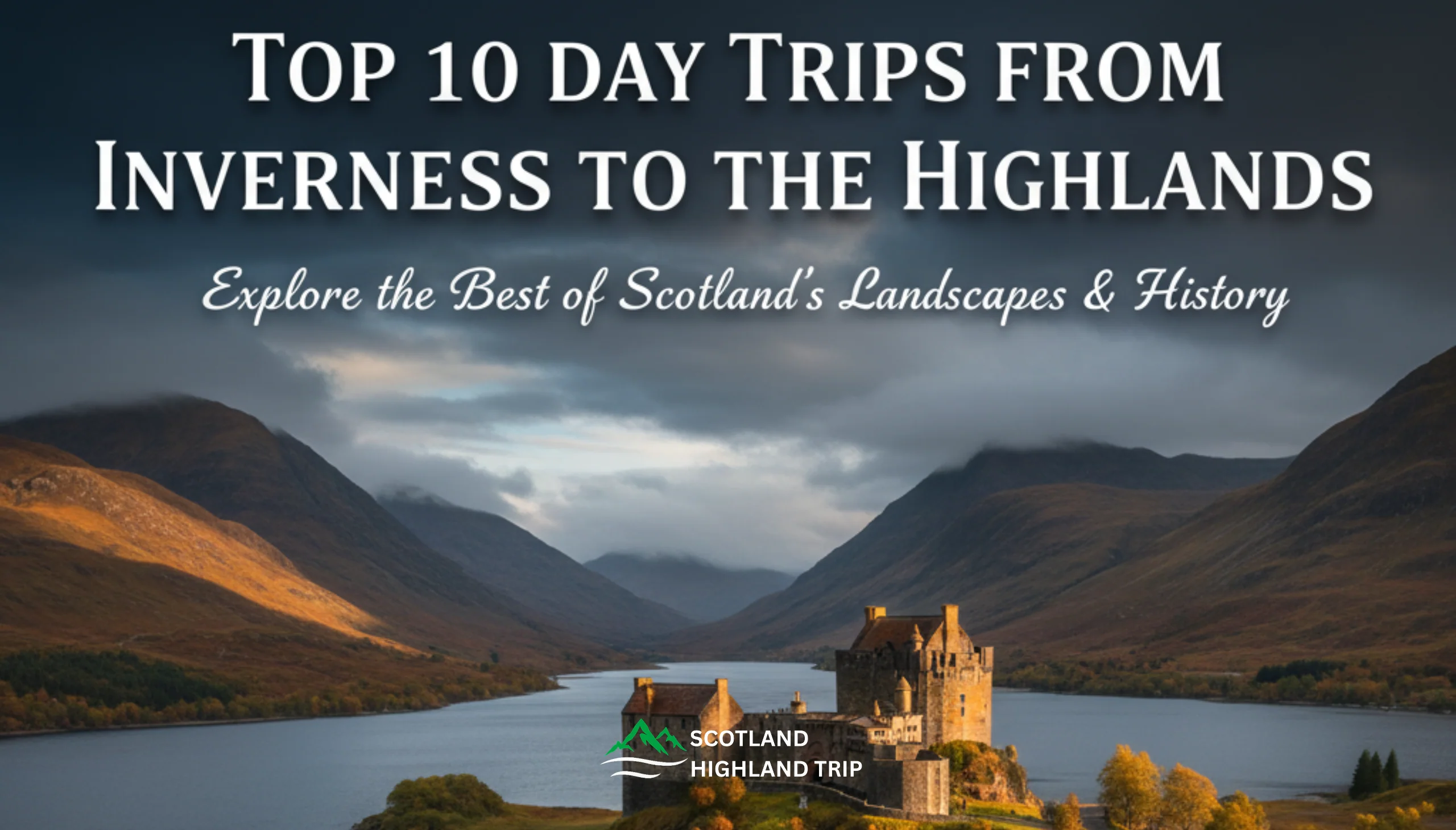
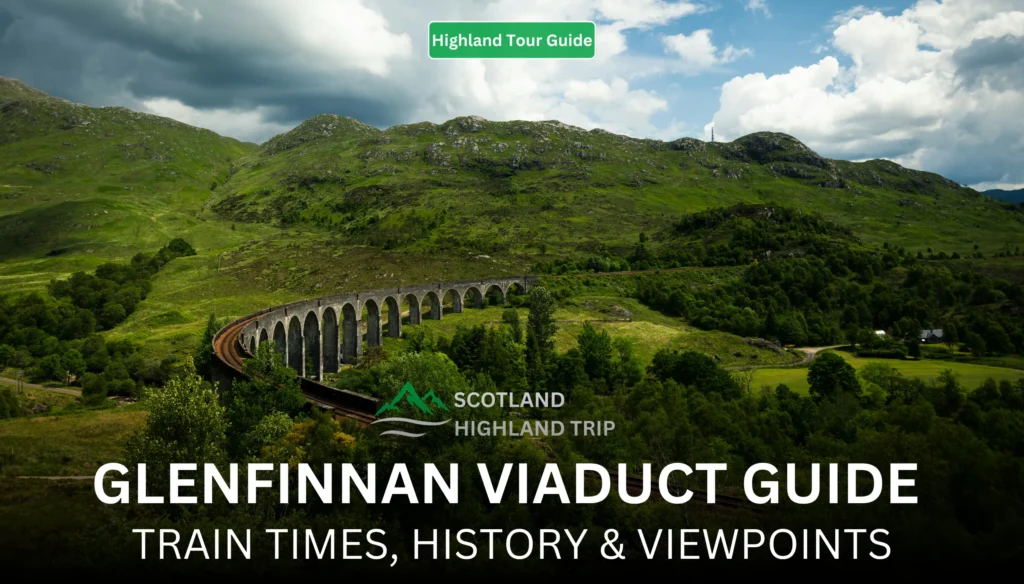
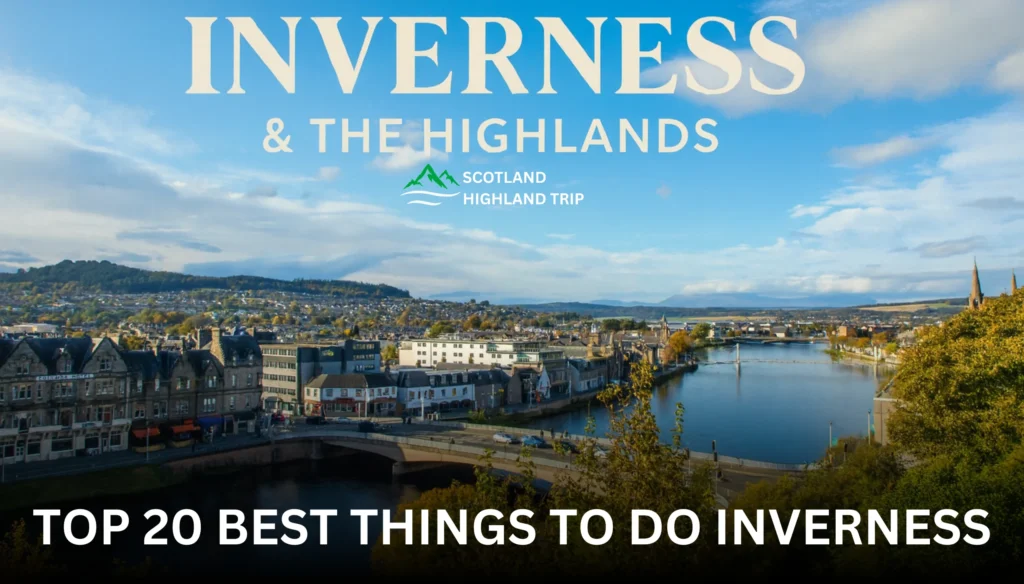
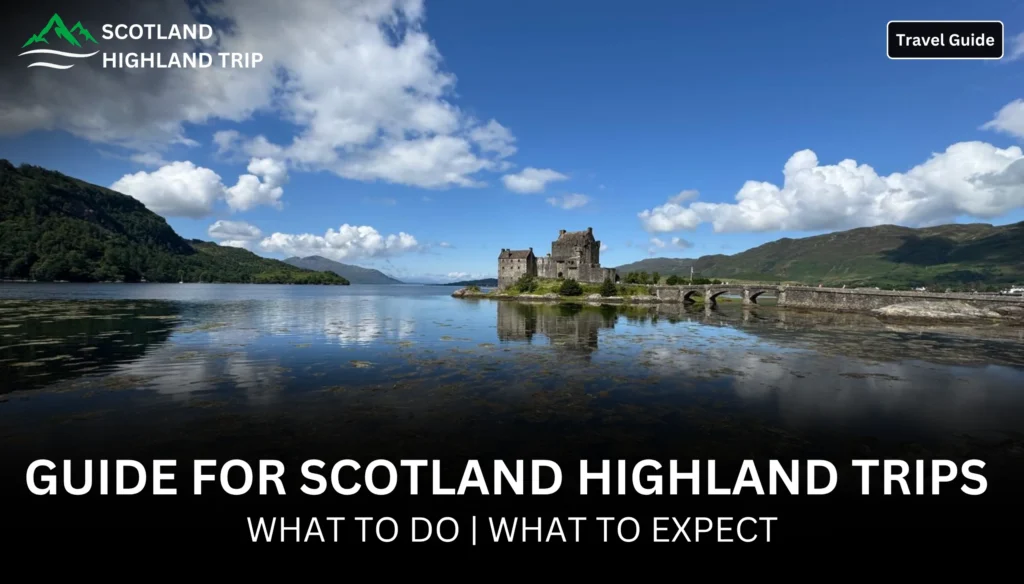
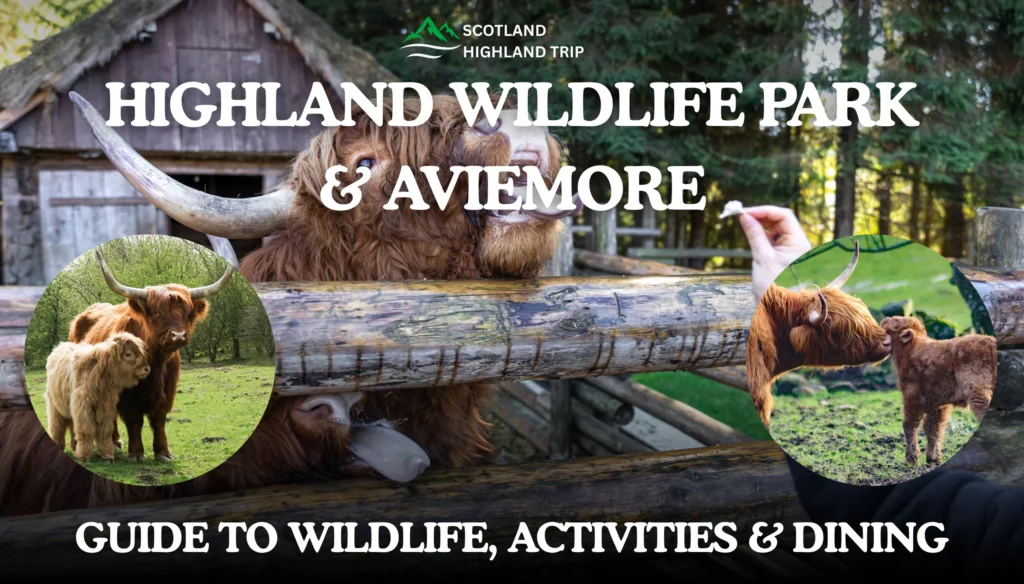
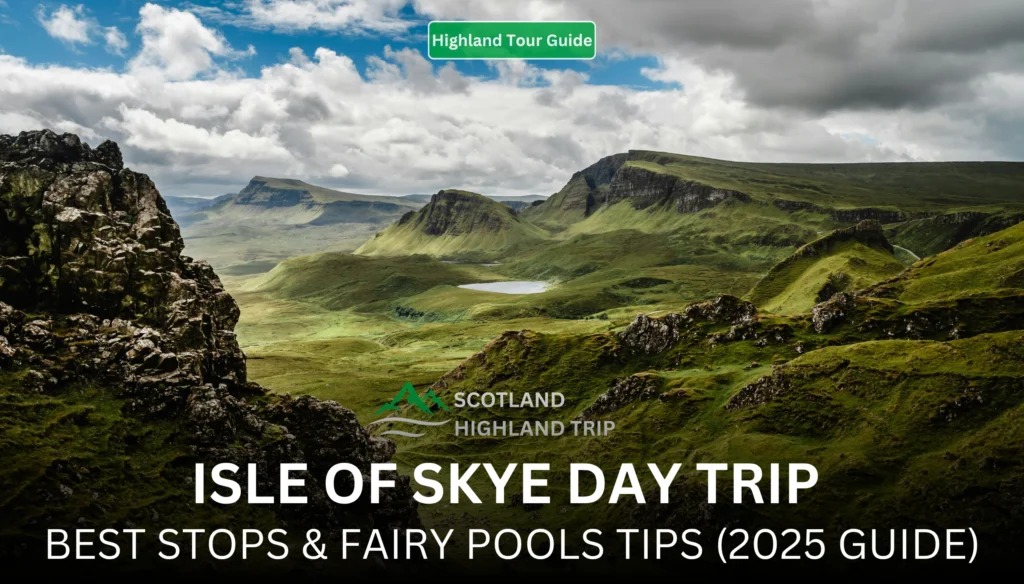
1 Comment
[…] require patience. Allow extra time between stops, and avoid planning a loop that crams in Skye, Inverness and the North Coast 500 in a single day. Hiring a local driver or joining an organised day tour […]